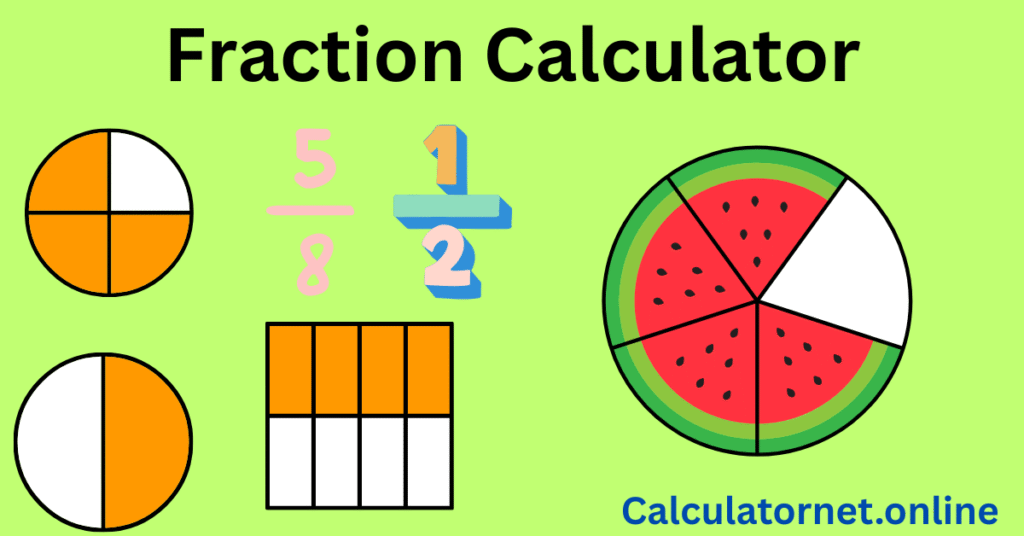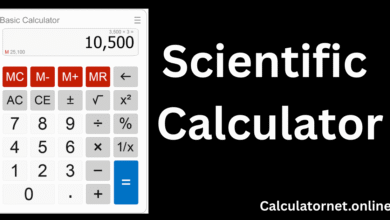Fraction Calculator
Fraction Calculator

Fraction Calculator
Easily calculate fractions online for free
Support This Project ❤️
If you like this tool, you can donate to help improve and maintain it.
Fraction Calculator: Your Easy Guide to Solving Fractions
Struggling with fractions? You’re not alone. While they might seem intimidating, fractions are just a way of representing a part of a whole. Think of a pizza with eight slices: if you eat three, you’ve eaten three-eighths of the pizza. Simple, right? Understanding how to work with fractions is a fundamental math skill, but even the most seasoned students and professionals can get tripped up. Whether you need to add, subtract, multiply, or divide them, a fraction calculator can be an invaluable tool to simplify the process and check your work. This guide will break down the basics of fractions and explain how a handy calculator can help you master them, all while building your confidence in math.
What Exactly Is a Fraction?
A fraction is made of two main parts: a numerator and a denominator. The numerator, the number on top, tells you how many parts you have. The denominator, the number on the bottom, tells you how many equal parts make up the whole. For example, in the fraction 83, 3 is the numerator and 8 is the denominator. The denominator can never be zero, because that would make the fraction undefined.
Fractions are used everywhere, from cooking recipes to construction and finance. Knowing how to perform basic operations on them is a key skill. While you can do these operations by hand, a fraction calculator can provide quick and accurate results, saving you time and preventing errors.
Addition and Subtraction of Fractions
Unlike whole numbers, you can’t add or subtract fractions unless they have a common denominator. The easiest way to find one is to multiply the denominators of all the fractions involved. Then, you multiply each numerator by the same value you multiplied its denominator by.
For example, to solve 43+61, you can multiply the denominators (4×6=24) to get a common denominator. Then, you’d multiply the numerator of the first fraction by 6 and the second numerator by 4.
- 43+61=4×63×6+6×41×4=2418+244=2422
This simplifies to 1211. A fraction calculator performs these steps instantly, so you don’t have to worry about finding the right common denominator or simplifying the final answer.
Multiplying and Dividing Fractions
Multiplication and division are a bit more straightforward since you don’t need a common denominator.
- Multiplication: Simply multiply the numerators together and the denominators together. For example, to multiply 43 by 61, you get 4×63×1=243, which simplifies to 81.
- Division: To divide fractions, you multiply the first fraction by the reciprocal of the second. The reciprocal is just the second fraction flipped upside down. So, to solve 43÷61, you would multiply 43 by the reciprocal of 61, which is 16. The problem then becomes 43×16=418, which simplifies to 29.
Simplifying and Converting Fractions
Simplifying fractions means reducing them to their lowest terms. This is done by dividing both the numerator and the denominator by their greatest common factor (GCF). For example, to simplify 2422, you find that the GCF of 22 and 24 is 2. Dividing both by 2 gives you the simplified fraction 1211.
You can also easily convert between fractions and decimals.
- Decimal to Fraction: A decimal like 0.123 can be written as 1000123 because the last digit (3) is in the thousandths place.
- Fraction to Decimal: To convert a fraction like 21 into a decimal, you simply divide the numerator by the denominator (1÷2=0.5).
A fraction calculator can handle all of these conversions with a single click, saving you from a lot of manual calculations.
Frequently Asked Questions
What is the easiest way to add fractions?
The easiest way to add fractions is to find a common denominator, which can be done by finding the least common multiple (LCM) of the denominators. Then, you adjust the numerators and add them together. Using a fraction calculator automates this entire process.
Can a denominator be zero?
No, a denominator can never be zero. A fraction with a zero in the denominator is considered undefined in mathematics.
How do you simplify a fraction?
To simplify a fraction, you find the greatest common factor (GCF) of the numerator and the denominator and divide both numbers by it. This reduces the fraction to its simplest form.
What is a mixed number?
A mixed number combines a whole number and a fraction, such as 221. It represents a whole number plus a fractional part.
How is a fraction calculator helpful for students?
A fraction calculator is a great tool for students because it helps them check their work, learn the steps for different operations, and build confidence in their math skills without the frustration of manual errors.
What is a reciprocal in fractions?
The reciprocal of a fraction is found by switching the numerator and the denominator. For example, the reciprocal of 43 is 34. Reciprocals are essential for dividing fractions.
Can I convert a big number fraction to a decimal?
Yes, even fractions with very large numerators and denominators can be converted to decimals by dividing the top number by the bottom number. A big number fraction calculator is particularly useful for these complex calculations.
Conclusion
Whether you’re a student trying to ace a math test, a baker doubling a recipe, or a carpenter calculating measurements, fractions are a part of everyday life. While understanding the concepts of numerators, denominators, and different operations is crucial, using a fraction calculator can make the entire process faster, more accurate, and less stressful. It’s an excellent tool for learning and for verifying your work, so you can build your confidence and tackle any fraction problem with ease.


